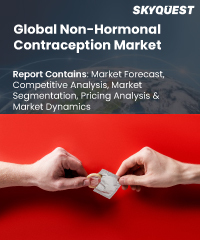
Report ID: SQMIG35D2065

Report ID:
SQMIG35D2065 |
Region:
Global |
Published Date: July, 2024
Pages:
157
|
Tables:
91 |
Figures:
76
North America dominates the global non-hormonal contraception market, owing to the high awareness levels, favorable reimbursement policies, and the availability of advanced healthcare infrastructure in the region. The United States is the largest market in North America, due to the high demand for non-hormonal contraceptive products and the presence of major players in the region. In addition, the growing trend of delaying childbirth and the increasing preference for non-invasive and reversible contraceptive methods among women are expected to drive the market growth in North America. The rising incidences of sexually transmitted infections and the need for effective prevention methods are also contributing to the growth of the non-hormonal contraception market in the region. Furthermore, the increasing adoption of technological advancements in the development of non-hormonal contraceptive products is expected to create opportunities for market growth in the region. The availability of various non-hormonal contraceptive products such as condoms, cervical caps, and diaphragms in retail pharmacies and online channels is expected to further drive the market growth in North America.
Asia Pacific (APAC) is expected to be the fastest-growing region in the global non-hormonal contraception market due to the increasing population levels, rising awareness about contraception, and improving healthcare infrastructure. Additionally, the growing demand for alternative contraceptive methods that do not have hormonal side effects is expected to drive market growth in the region. China and India are the largest markets for non-hormonal contraceptives in the APAC region due to the high population levels and increasing awareness about family planning. The governments in these countries are also taking initiatives to promote family planning and provide access to affordable contraceptive methods, which is expected to further drive market growth. Japan, South Korea, and Australia are also significant markets in the APAC region due to the high awareness levels and advanced healthcare infrastructure. These countries have high per capita income levels, which enable consumers to afford non-hormonal contraceptive products. The increasing adoption of e-commerce and the growing trend of online pharmacies is also expected to drive market growth in the APAC region. Online pharmacies offer a wide range of non-hormonal contraceptive products at competitive prices, with doorstep delivery options, which is expected to increase their accessibility to consumers in remote areas.
Our industry expert will work with you to provide you with customized data in a short amount of time.
REQUEST FREE CUSTOMIZATIONWant to customize this report? This report can be personalized according to your needs. Our analysts and industry experts will work directly with you to understand your requirements and provide you with customized data in a short amount of time. We offer $1000 worth of FREE customization at the time of purchase.

Report ID: SQMIG35D2065